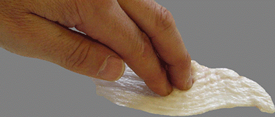About Fascia
FASCIA BACKGROUND
 FasciaFascia has both generalized and specialized functions in the human organism. As such, it is the subject of a wide range of scientific research with many specializations of focus and emphasis. Similarly, fascia and its properties are of central importance to clinicians practicing in various conventional therapies and in the wide range of complementary and alternative medicine (CAM) modalities.
FasciaFascia has both generalized and specialized functions in the human organism. As such, it is the subject of a wide range of scientific research with many specializations of focus and emphasis. Similarly, fascia and its properties are of central importance to clinicians practicing in various conventional therapies and in the wide range of complementary and alternative medicine (CAM) modalities.
Recent scientific research in the field of the human fasciae has resulted in several significant findings. Combined, the results from these worldwide research activities constitute a body of significant and important data. It is our shared vision that it is time to gather together all the latest and best scientific information about the body’s connective tissue matrix.
The FRC continues to provide a regular collegial settings for the mutual benefit and collaboration of basic scientists, academicians, and professionals engaged in the many clinical practices where fascia is an important consideration.
WHAT IS FASCIA?
 Fascia is a term which continues to carry different meanings for various professions and perspectives. Based on the connecting nature of this tissue and the interdisciplinary range of related professionals working with it, the Fascia Nomenclature Committee (FNS) of the Fascia Research Society recommends the following two major usages:
Fascia is a term which continues to carry different meanings for various professions and perspectives. Based on the connecting nature of this tissue and the interdisciplinary range of related professionals working with it, the Fascia Nomenclature Committee (FNS) of the Fascia Research Society recommends the following two major usages:
- A fascia is a sheath, a sheet, or any other dissectible aggregations of connective tissue that forms beneath the skin to attach, enclose, and separate muscles and other internal organs. See "A fascia and the fascial system".
- The fascial system consists of the three-dimensional continuum of soft, collagen containing, loose and dense fibrous connective tissues that permeate the body. It incorporates elements such as adipose tissue, adventitiae and neurovascular sheaths, aponeuroses, deep and superficial fasciae, epineurium, joint capsules, ligaments, membranes, meninges, myofascial expansions, periostea, retinacula, septa, tendons, visceral fasciae, and all the intramuscular and intermuscular connective tissues including endo-/peri-/epimysium. The fascial system surrounds, interweaves between, and interpenetrates all organs, muscles, bones and nerve fibers, endowing the body with a functional structure, and providing an environment that enables all body systems to operate in an integrated manner. See "Update on fascial nomenclature".
There is a substantial body of research on connective tissue generally focused on specialized genetic and molecular aspects of the extracellular matrix. However, the study of fascia and its function as an organ of support has been largely neglected and overlooked for many years. Since fascia serves both global, generalized functions and local, specialized functions, it is a substrate that crosses several scientific, medical, and therapeutic disciplines, both in conventional and complementary/alternative modalities.
Among the different kinds of tissues that are involved in musculoskeletal dynamics, fascia has received comparatively little scientific attention. Fascia, or dense fibrous connective tissues, nevertheless potentially plays a major and still poorly understood role in joint stability, in general movement coordination, as well as in back pain and many other pathologies. One reason why fascia has not received adequate scientific attention in the past decades is that this tissue is so pervasive and interconnected that it easily frustrates the common ambition of researchers to divide it into a discrete number of subunits, which can be classified and separately described. In anatomic displays, fascia is generally removed, so the viewer can see the organs nerves and vessels but fails to appreciate the fascia, which connects and separates these structures.
Learn more about fascia by watching online video lectures. If you are not a member of the Fascia Research Society, scroll down to the section Public Lectures.
